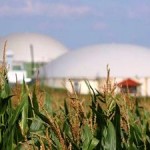Authors:
Ove Hoegh-Guldberg1 and John F. Bruno1,2
1 Ocean and Coasts Program, Global Change Institute, University of Queensland, St. Lucia, QLD 4072, Australia.
2 Department of Marine Sciences, University of North Carolina, Chapel
Hill, NC 27599, USA.
Marine ecosystems are centrally important to the biology of the planet, yet a comprehensive understanding of how anthropogenic climate change is affecting them has been poorly developed. Recent studies indicate that rapidly rising greenhouse gas concentrations are driving ocean systems toward conditions not seen for millions of years, with an associated risk of fundamental and irreversible ecological transformation. The impacts of anthropogenic climate change so far include decreased ocean productivity, altered food web dynamics, reduced abundance of habitat-forming species, shifting species distributions, and a greater incidence of disease. Although there is considerable uncertainty about the spatial and temporal details, climate change is clearly and fundamentally altering ocean ecosystems. Further change will continue to create enormous challenges and costs for societies worldwide, particularly those in developing countries.
Earth, with its life-filled ocean, is unusual among planets (1). Covering 71%of Earth’s surface, the ocean nurtured life on our planet and continues to play a dominating role in regulating its climate. Change has been the norm as Earth has swung through a variety of states in which life has prospered, dwindled, or experienced calamitous declines. In the latter case, intrinsic events (e.g., volcanic activity) or extrinsic events (e.g., large meteorite strikes) have sometimes resulted in hostile conditions that have increased extinction rates and driven ecosystem collapse. There is now overwhelming evidence that human activities are driving rapid changes on a scale similar to these past events (2). Many of these changes are already occurring within the world’s oceans (Figures 1 and 2), with serious consequences likely over the coming decades.
Our understanding of how climate change is affecting marine ecosystems has lagged behind that of terrestrial ecosystems. This is partly due to the size and complexity of the ocean, but also to the relative difficulty of taking measurements in marine environments. Long-term studies of climate change in the oceans are rare by comparison to those on land (3). Here, we review the impacts of anthropogenic climate change on marine ecosystems, revealing that the majority are changing rapidly with an increased risk of sudden non-linear transformations. Given the overwhelming importance of the ocean to life on our planet, these changes underscore the urgency with which the international community must act to limit further growth of atmospheric greenhouse gases and thereby reduce the serious risks involved.
Rates of Change
Rising atmospheric greenhouse gas concentrations have increased global average temperatures by ~0.2°C per decade over the past 30 years (4), with most of this added energy being absorbed by the world’s oceans. As a result, the heat content of the upper 700 m of the global ocean has increased by 14 × 1022 J since 1975 (5), with the average temperature of the upper layers of the ocean having increased by 0.6°C over the past 100 years (2) (Figure 1, A and B). These changes are ongoing; global ocean surface temperatures in January 2010 were the second warmest on record for the month of January, and the period June to August 2009 reached 0.58°C above the average global temperature recorded for the 20th century, 16.4°C (6).
In addition to acting as the planet’s heat sink, the oceans have absorbed approximately one-third of the carbon dioxide produced by human activities. The absorption of anthropogenic CO2 has acidified the surface layers of the ocean, with a steady decrease of 0.02 pH units per decade over the past 30 years and an overall decrease since the pre-industrial period of 0.1 pH units (7) (Figure 1C). Although these increases appear small in terms of pH, they are associated with a substantial decline in the concentration of carbonate ions (Figure 1D) and represent a major departure from the geochemical conditions that have prevailed in the global ocean for hundreds of thousands if not millions of years (Figure 1C) (8,
9).

Increases in the heat content of the ocean have driven other changes. Thermal expansion of the oceans as well as increased meltwater and discharged ice from terrestrial glaciers and ice sheets have increased ocean volume and, hence, sea level (10) (Figure 2, A and B). Warmer oceans also drive more intense storm systems (11) (Figure 2C) and other changes to the hydrological cycle (12). The warming of the upper layers of the ocean also drives greater stratification of the water column, reducing mixing in some parts of the ocean and consequently affecting nutrient availability and primary production. These changes have increased the size of the nutrient-poor “ocean deserts” of the Pacific and Atlantic by 6.6 million km2, or 15%, over the period 1998 to 2006 (13).












